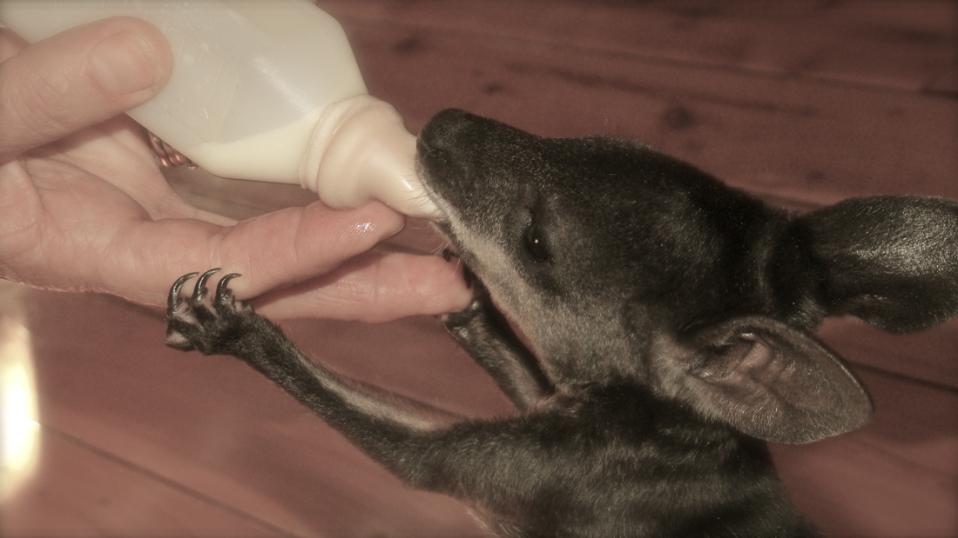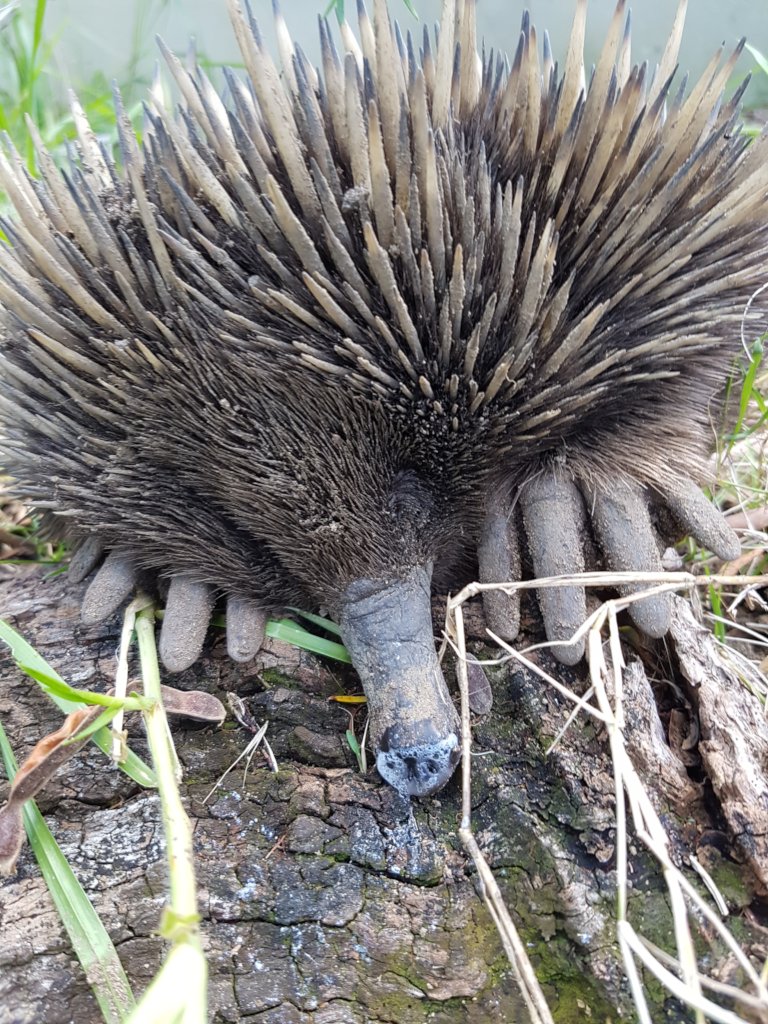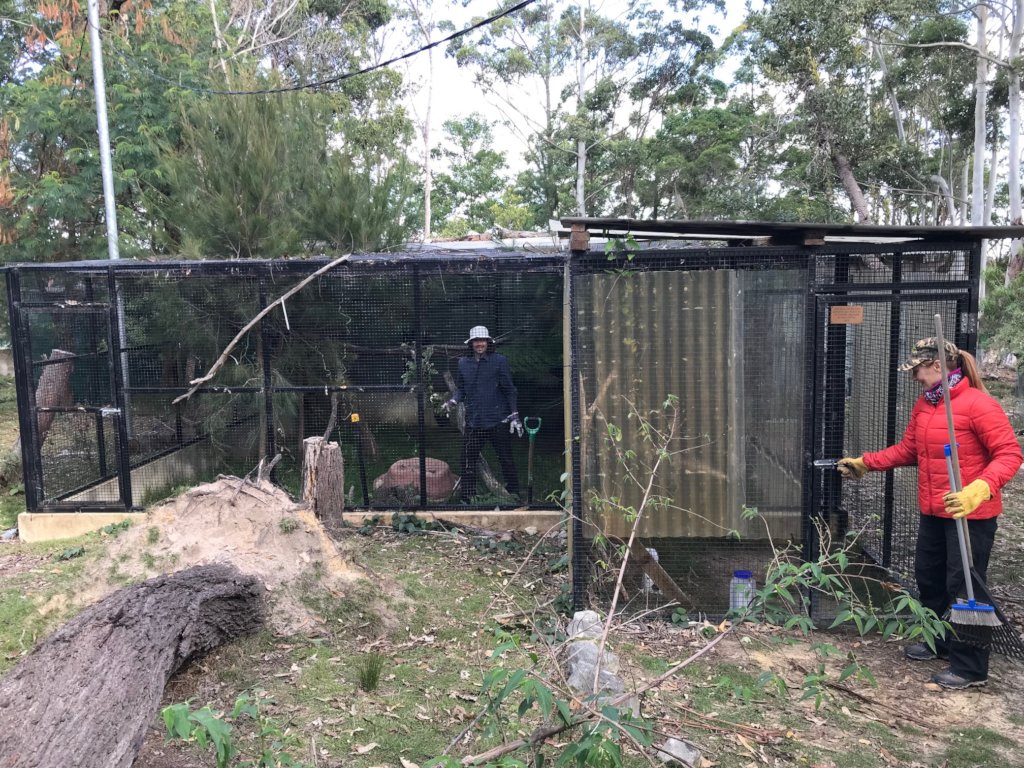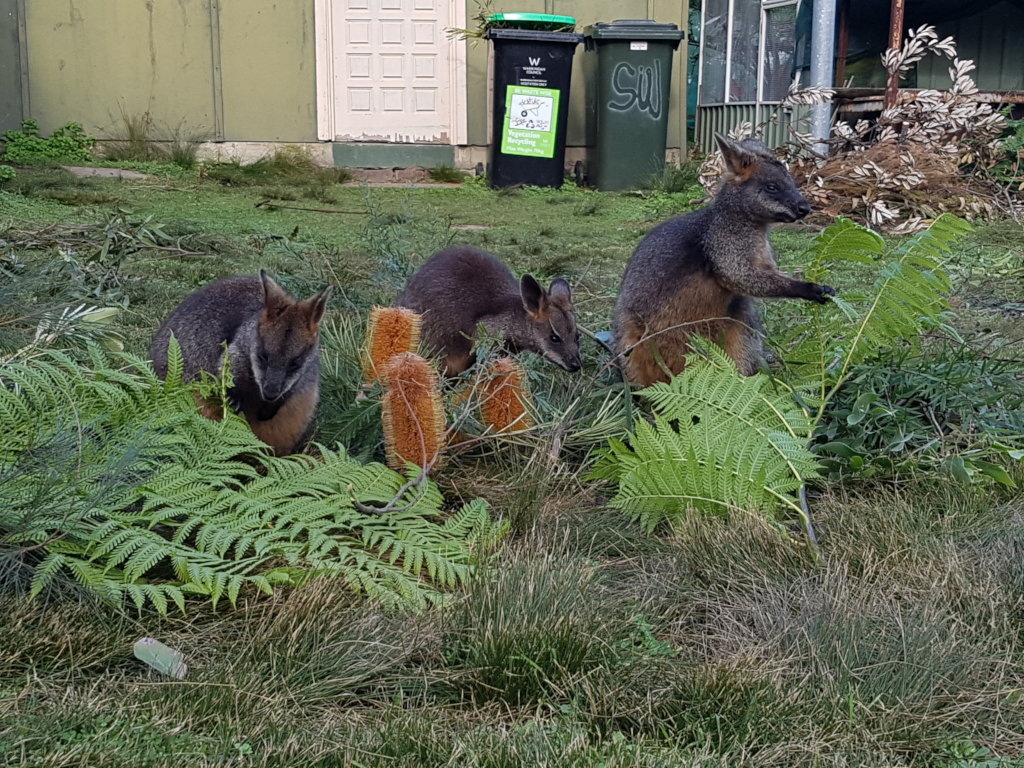May 20 - 26, 2018: Issue 360
Sydney Wildlife's Waratah Park Rehabilitation Centre:
5 Years in the Making - A Celebration

Rehabilitation - 5 Years In The Making
By Joan Reid - Volunteer Macropod co-ordinator
To celebrate 5 years of the "Rehabilitating Wallabies and Other Native Wildlife" project, we thought we would share with you how far we have come since the beginning. We really wouldn’t be able to do what we do without your generosity.
Since we began back in April 2013, we have received a whopping 333 donations totaling $17,009. We can't thank you all enough as even the smallest donations help.

You have helped Spike the Echidna
As the donations came in, it enabled us to purchase building materials and, over time, expand the number of enclosures in the facility allowing us to take in more animals for rehabilitation. We started off the facility with one rehabilitation area for macropods, which has now doubled in size and includes a padded quarantine room and a small-enclosed area for injured animals needing daily treatment making it easier to handle them. Over the last 5 years, we have built an additional 8 enclosures allowing us to take in larger quantities and varieties of species.
Design and Build
Enclosure finished and in use
Is part of an old aviary in the weeds?

Found, fixed and now replanting.
By having the variety of different enclosures now, we are able to offer around 25 animals a month the chance to spend time in the facility, to build up their strength, recover from their injuries and return to the wild fit and healthy to continue living the life they were before being injured and needing our help. As a true testament to the success of the facility, none of the animals we have microchipped prior to release have returned into care due to not coping in the wild.

Swamp wallabies enjoying their browse
Not only have we been able to build the enclosures but you have made it possible to buy food and formulas required and pay vet bills when needed.
In the next 5 years we hope to continue to improve on our successes and make our facility an even better one for our precious wildlife.
Since opening the rehabilitation facility years ago, we have certainly had a variety of animals come through. We wanted to share with you a couple of unique stories of visitors we have had to the facility in the last few months.
We received a call to the Sydney Wildlife hotline about a large eastern grey kangaroo that was in a suburban backyard. The member of the public said that it always appeared at 7:30am each day so suggested that was a good time for us to try to catch this poor kangaroo to relocate to a more suitable area. Early the next morning, two Sydney Wildlife volunteers arrived at the location to be ready for the kangaroos visit. As it is a wild kangaroo, it was decided the safest way of capturing it was to use a dart gun to reduce the stress on the animal as well as ensure we were able to catch it quickly.
As expected, at 7:30 the kangaroo appeared and one of our experienced macropod carers was able to dart her on the first attempt. Once the drugs took effect and she was sedated, we were able to put her in a large macropod bag and transport her to the rehabilitation facility allowing her to wake up in safety and we could assess her condition and behaviour.
Darted Eastern Grey Kangaroo
Resident Roo watching the visitor wake up
Exploring the rehab facility
After a few days of observation to ensure she was feeding correctly, was in good health and not showing any signs of odd behaviour she was able to be released into the company of a wild mob of Eastern Grey Kangaroos.
Our facilities have proven to be excellent for some species in their rehabilitation phase to the point where they never want to leave.
One bandicoot in the large aviary was unable to be found when we were trying to catch her for release. After two attempts of a few people each time trying to find the bandicoot with no luck, we were puzzled. We knew she was in there as the food was being eaten and there were small freshly dug holes around the floor of the enclosure from her searching for and eating insects. We decided to put a camera in the aviary to make sure that it was in fact the bandicoot eating the food.
The cameras showed after just one night that it was in fact a very healthy bandicoot.
Elusive bandicoot found on camera
Now more determined than ever to catch the bandicoot three Sydney Wildlife volunteers spent well over half an hour tryng to find the bandicoot and just when we were about to give up one of the volunteers disturbed her out of a very well camouflaged nest.
Being able to provide such a natural enclosure enabled the bandicoot to exhibit its survival techniques which resulted in her being able to evade captured for soo long even though we knew it was there.
This is a testament to how your ongoing support and generosity allows us to provide these animals with such a good foundation for a successful release.
Sydney Wildlife is an Australian organisation run 100% by volunteers. Across this big city, Sydney Wildlife volunteers rescue native Australian animals including many Wallabies and other native wildlife.
To assist in the rehabilitation of these native animals, Sydney Wildlife has built and is continuing to expand a rehabilitation facility at Waratah Park.
This page is for all the wonderful organisations that donate their time at the park helping us to build and maintain these facilities to share their experiences and photo's from their time at the park.
Thank you to everyone that has been involved with helping at our rehabilitation Facility I think we have made good use of the dollars donated.
Companies such as Dell, Cisco, VMware, actifio, EY, Bayer, Salesforce, McAfee, ALDI and Bunnings, you really make a difference.
To the dedicated Sydney wildlife volunteers who feed and look after the animals daily, thank you as this could not have happened without you Justine, Lorraine, Jenny and MJ.
If you would like to make a donation to the Waratah Park project, please follow the below link: